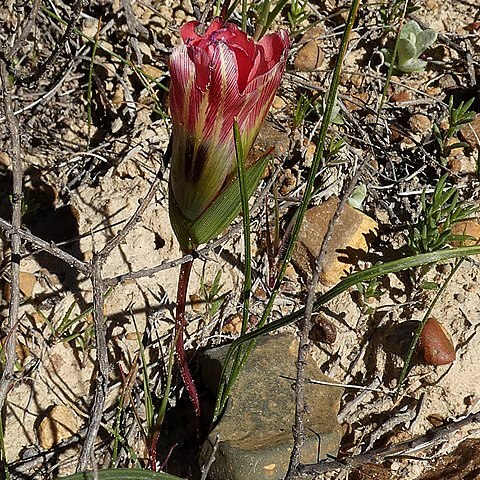Plants 120-400 mm long. Corm with curved basal teeth. Leaves filiform, 100-400 x c. 1 mm, grooves narrow. Bracts with narrow membranous margins which are usually colourless in the lower part and brown upwards. Flowers 30-50(-65) mm long, shiny scarlet or currant-red, each segment with a brownish black blotch on a greyish green, brownish or sometimes purplish blue background and below that a yellow V-shaped blotch, outer segments with 5-7 yellow veins and fine feathered veining on the backs. Perianth tube shallow, saucer-shaped, 2-4 mm deep, with a white, 6-pointed star-shaped blotch inside; segments subrhomboid-cuneate to obovate-cuneate, 25-40(-55) x 12-20(-25) mm. Filaments free, 3-5 mm, cream or dark; anthers 8-12 mm long, purplish or yellow. Style 7-12 mm; stigmas halfway up the anthers.
Cormous geophyte, 6-10 cm, corms rounded at base with coarse, bent teeth. Basal leaves several. Flowers dark red, rarely pink with black blotches at edge of creamy green cup, inner bracts 2-keeled.

